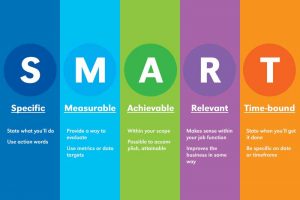Our posts over the next few weeks will cover a challenging area for many of the leaders we work with: leading during the COVID-19 pandemic. How we work, where we work, how we meet, and how we measure results have all have been tested in the past several years. This post focuses on the challenges our clients have experienced with leading remote workers.
The Growing Remote Workforce
The COVID-19 pandemic has accelerated the move to a remote workforce. A recent CFO survey revealed that over 70% of companies plan to permanently keep some of their employees remote after the current pandemic ends. A different Upwork survey of leaders found that companies expect over 55% of their workforce to be remote in 5-years.
A hybrid model is more likely for many employers, with workers working remotely 10-20% of the time. An estimated 70% of the workforce is predicted to be working remotely at least five days per month by 2025. Most employers are finding productivity (as measured by revenue divided by the number of employees) has stayed level or even increased as more employees have spent part of their time in a remote office.
Performance Management Must Change
Our team has spoken with several leaders about the challenges they have experienced with leading remote workers during the COVID-19 pandemic. Remote work has changed their performance management considerably.

Many leaders still evaluate workers primarily based on visibility:
- Did I see you show up to work on-time or early?
- Do I recall you staying to work late?
- Have I seen you put in the “extra effort” on the job?
- Have you made any mistakes or have customers or coworkers complained about you recently?
Employees who are present and visibly “part of the team” are more likely to get involved in emergent issues and be asked to take on “special projects” for the leader. They are therefore more likely to receive positive reviews and advancement in the organization.
Managing and evaluating performance based on how much an employee visibly works must change. Leaders must use new tools and methods for leading remote employees.
Measuring and Leading Remote Employees
Here are five tips to help you lead remote employees:

- Leading remote employees must begin with setting clear expectations. The first key step for any leader is to clarify and communicate the expectations for the remote employee(s). How should they be spending their time? How will their responsibilities change when working remotely? Both the leader and employee must agree to the expectations.
- Identifying key performance indicators and metrics is critical. Once expectations are set you must agree on how the expectations will be measured. Good leaders do this with every employee, but it is even more critical for remote employees to have clear metrics of success identified.
- Continuous feedback is essential to help employees navigate their job responsibilities and meet performance expectations. Focusing on work completed rather than hours worked will require frequent communication and updates on status, issues, and obstacles. Establish a regular meeting schedule to review and clarify their expectations and review their key performance indicators. If there are gaps (they are not meeting expectations or performance metrics), why? What will you change or adjust so that the remote employee is able to meet the organization’s goals?
Staying Connected with Remote Employees

- Use remote employee management tools and technologies for a better experience. What systems and tools will your remote employees be using? The right software will facilitate continuous feedback. Use tools like Zoom, Asana, and Slack to streamline communication and project management between team members. Use file sharing to increase seamless work efforts between all team members.
Is their connectivity (phone and internet) adequate? Some employees will have internet or cell service issues that you must deal with, especially if they will be working with clients. Our Personal Kaizen team personally experienced poor service from customer support team members working remotely with poor phone service.
- Don’t forget to maintain the culture! It is easy for remote employees to lose touch with their coworkers and become disengaged from the organization. Leaders must do a better job of cumminicating news (both good and bad) and providing opportunities for remote teams to connect with the rest of the organization.
Note that the above tips apply to your on-site employees as well. If you aren’t managing through metrics, get help!
Tips for Remote Employees
What if you are a remote employee in an organization that still evaluates performance mainly through visibility rather than results? Here are a few tips that will help you succeed:
- Maintain visibility with your leadership. In a remote environment where employees collaborate via email, engagement is harder for employees to convey and for management to identify. Do your best to keep abreast of the issues of the day, but also be quick to demonstrate how much you accomplished due to not being distracted by the latest emergency.
- Have a professional appearance when remote. Please ensure your clothing and remote work environment are professional and appropriate for the culture. Use our work from home hacks (coming next week) so you will look and sound more effective than your coworkers. Learn how to use the technology, and if your internet speed is slow ask your employer to upgrade it!
- Kids and pets do not belong in the office. Unless your employer normally encourages bringing pets to work, we suggest you not let your cat or dog sit on your lap during online meetings. Your boss and coworkers also don’t want you distracted by a nearby child, so close your door to avoid interruptions.

- Participate in online meetings. Be sure to contribute in the online meetings you participate in. Smile and volunteer to help on issues where possible. Never join a meeting and leave your camera off. You need to stay at least as present and engaged as the people inside the office.
- Measure your own productivity. If your leader isn’t measuring your performance via the methods explained in the section above then you should! Be sure to schedule regular meetings with your team or project leader to share recent accomplishments and clarify your priorities. We suggest you maintain a shared document with this information. At the end of the period you should have a list of accomplishements and be able to write your own performance evaluation.
Please share your experience
Let us know if you are currently leading remote employees or if you work remotely and need to help your management lead you. What other tips would you recommend?




